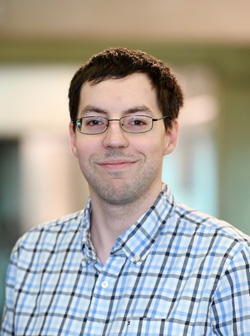Researchers at Dalhousie and ocean data analytics innovation environment DeepSense have developed a machine learning method for predicting wind speed and wave height measurements. Such measurements support safe and more accurate decision making by the Halifax Port Authority and the Halifax Marine Pilots.
Results published in the Journal for Ocean Technology demonstrate how the team used data from smart buoys to provide predictions for use during periods of scheduled buoy maintenance and/or spontaneous sensor failures. These predictions will be valuable to the Port community in providing continuity of critical information used in the safe navigation of vessels within the Port of Halifax and the safe transfer of Halifax Marine Pilots between pilot boats and commercial vessels.
The DeepSense/SmartAtlantic project is a collaboration between the Centre for Ocean Ventures and Entrepreneurship (COVE), DeepSense, the Halifax Port Authority (HPA)and the Canadian Marine Pilots’ Association (CMPA).
Based out of the Faculty of Computer Science with funding and support from the Atlantic Canada Opportunities Agency (ACOA), the Province of Nova Scotia, the Ocean Frontier Institute (OFI) and IBM, DeepSense drives growth in the ocean economy through artificial intelligence, machine learning and big data applied research.
Making predictions
Initiated by COVE with partners at the HPA and the CMPA, the project aimed to provide a highly accurate additional level of redundancy for the SmartAtlantic Herring Cove Buoy.
“The Smart Buoy platform hosts several ocean sensors and generates refined forecasts that have become a crucial resource for marine users that enter the Halifax Harbour," says Melanie Nadeau, CEO of COVE. "With the addition of DeepSense and their ability to use data collected over the last 7 years, we have a path forward to providing seamless information to the marine industry."
 Chris Whidden, assistant professor in the Faculty of Computer Science, led the research team associated with the project with support from Master of Applied Computer Science student Jesuseyi Fasuyi.
Chris Whidden, assistant professor in the Faculty of Computer Science, led the research team associated with the project with support from Master of Applied Computer Science student Jesuseyi Fasuyi.
“The issue is that if live sensor data isn’t available from smart buoys, we are left guessing if it’s safe to transfer pilots to large shipping vessels and cruise ships to guide them into the Halifax Harbour.” says Dr. Whidden.
“We took the main predictive variables of wind speed and wave height, and data related to these variables collected by other smart buoys and land stations, to think about how we can use machine learning to make predictions around this activity for the buoy at Herring Cove. It’s novel as no one else seems to be making predictions like this from only one or two replacement sensors.”
Machine learning is used commonly to identify patterns in data and use this to make automatic predictions or decisions.
“There are many, many different machine learning models and we had to decide which one to concentrate on,” explains Dr. Whidden. “We ended up looking at three: random forests, support vector machines and a neural network model. They're kind of exemplars for this task. So random forests and support vector machines are more older style machine learning models, which tend to work really well, especially on cases where you don't have a lot of data. And then neural networks are kind of the bread and butter of deep learning. In the end, the random forest model performed the best with, on average, an error of only 0,17 metres for wave heights.”
Future possibilities
Researchers began exploring aspects such as seasonality and extreme weather conditions and initial findings have opened up future possibilities for the project with the team now looking ahead to phase two with Master of Computer Science student Amruth Kuppili who is looking to better understand seasonal variances and continue the development of a framework to allow a future live data and prediction dashboard.
“The Smart Buoy, when it was first deployed on November 7, 2013, made it possible to improve operational safety, security and efficiency without changing existing infrastructure,” says Captain Adam Parsons, harbour master for the Halifax Port Authority. “Having it in place has provided all of us in the port community — operators, shippers and marine pilots — with valuable information that we have come to rely on. Taking innovative steps to fill in those gaps during times of maintenance or sensor issues is something we all appreciate and welcome.”
Captain Andrew Rae, vice-president of the Atlantic, Canadian Marine Pilots’ Association and chair, Joint Operating Committee of the Smart Atlantic Herring Cove Buoy, echoes this optimism around the impacts of the project.
“DeepSense’s pioneering application of machine learning to accurately predict two of the met-ocean data sets (wind speed and wave heights) collected by the SmartAtlantic 3-metre ODAS buoy moored in the vicinity of Herring Cove, exemplifies the successful partnering of applied computer science to a practical safety application. The Joint Operating Committee of the SmartAtlantic Herring Cove Buoy is looking forward to the next phase of the project.”

